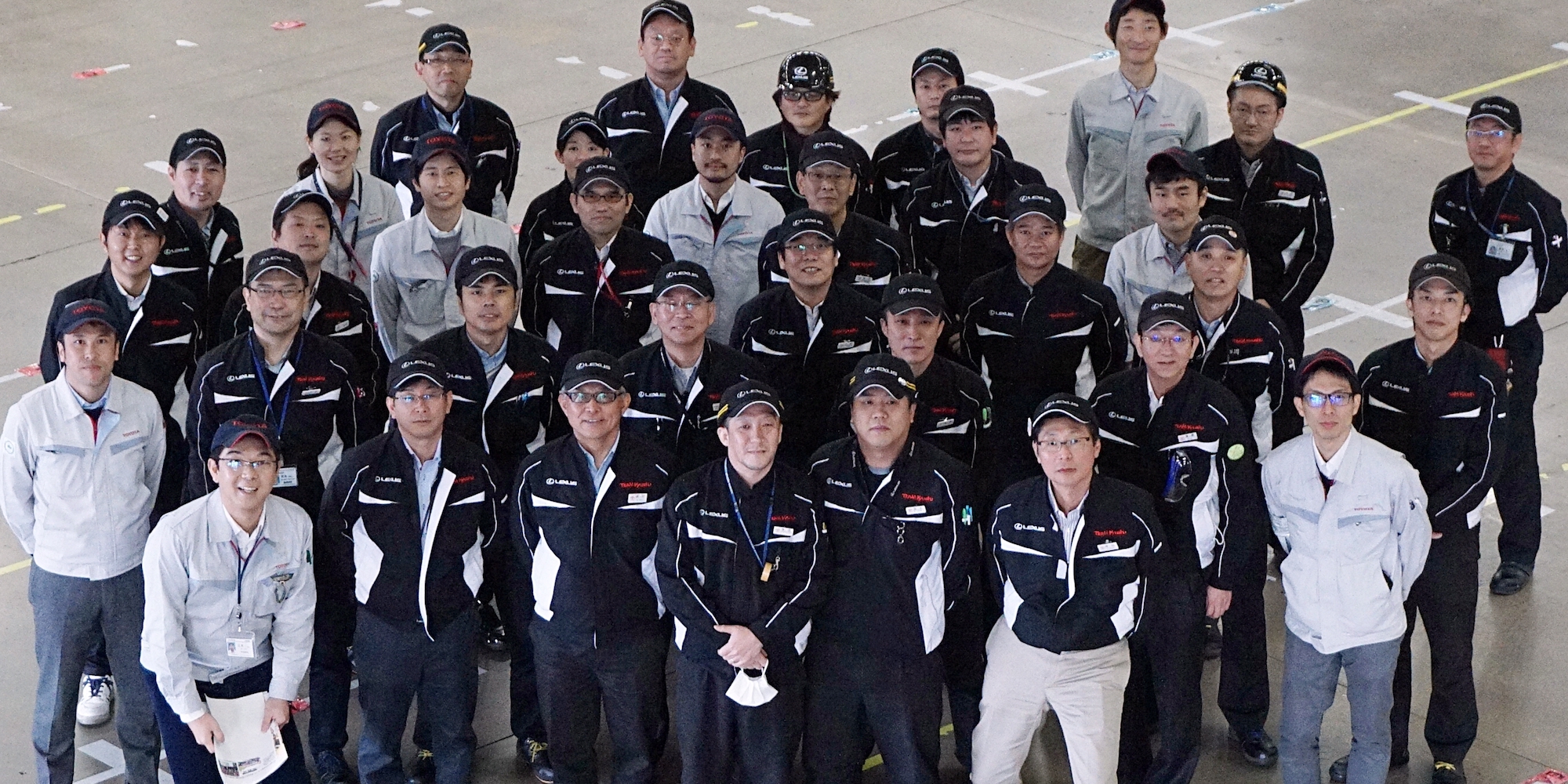
Why you need lean thinking in your digital transformation
FEATURE – Organizations can only reap the full benefits of modern technologies if they pair up their digitalization efforts with an enterprise-wide lean transformation.
Words: Flávio Picchi, Vice President, and Christopher G. Thompson, Project Manager, Lean Institute Brasil
Companies are more and more interested in so-called “digital transformations”, be it for the opportunity to optimize and innovate business models or because they fear they will fall behind their competitors or the most disruptive players in the market.
Changing customer expectations increasingly include products and service based on digital technologies, the use of mobile devices, Internet of Things (IoT), cloud computing, data analysis, and so on. This opens up many opportunities for organizations that have not yet been explored in their entirety.
For us to tap into the full potential of digital technologies, however, we need to integrate lean into our strategic thinking, to ensure that our digital transformations actually help us to add value and eliminate waste. Disconnected technology-based initiatives that lack a clear purpose won’t go very far.
Every effort should begin with a strategic definition of what value it intends to offer customers – to go back to one of the basic principles of lean thinking.
Many companies are heading in this direction, but we see that they often set goals for themselves that are rather generic in scope: “We want an app to communicate with the customer”, or “We should introduce more robots and automation in our processes”, or “We need to be more digital”. Others seek to incorporate concepts that have proved successful in startup companies (from design thinking to agile), but tend to focus only on isolated tools.
For a real competitive leap to take place, a broader understanding of what a digital transformation is must be developed. Research and advisory company Forrester, for example, has an interesting definition: “digital businesses are those who gain, serve, and retain customers through the continuous creation and exploitation of digital resources, in order to deliver new value for customers and increase their operational agility.”
As it happens, this definition is quite aligned with lean thinking. From our experience supporting pioneering companies in this journey, we have come to realize that digital transformations must be integrated with lean transformations, with both oriented towards creating value for customers.
We believe that the following five points can be useful to those who are starting or evolving in their digital efforts:
1. START WITH A CLEAR PURPOSE
Technologies offer great opportunities and we haven’t fully understood just how great they can be. It is therefore normal that the idea of initiating a technology-driven transformation fascinates business leaders and investors so much. Many, however, use vague phrases to describe their goals, such as “intensive use of technology”, which betrays a lack of clarity in their purpose. People from such organizations are more likely to over-invest, creating complex devices or apps without having a clear idea of how they’ll be used. They won’t see good results.
Lean teaches us that improvement begins with a clear understanding of customer value and how each initiative is a reflection of the company's strategy deployment (which in lean jargon, we call hoshin kanri). The use of technologies to innovate products, processes and business models must be driven by specific, clear goals. Experiments are the essence of lean, and they should certainly be used, but always with a well-defined target.
2. LEARN FROM YOUR CUSTOMERS
Understanding customer needs is always the first step in lean thinking. The greatest opportunities that new technologies bring are, without a doubt, tied to the possibility for companies to interact much more closely with their clients, making the dialogue with them quicker and more effective, which in turn generates faster learning cycles.
For instance, the use of augmented reality to experiment with concepts and incorporating communication and intelligence into services and products (through mobile and IoT devices) generates a huge amount of information on customer preferences, habits, usage patterns, and needs. If well used, it can allow companies to constantly review their products, services, and business models.
Learning about the customer to create better products and services, through what we call reusable learning, should be the focus of a digital transformation, as it enables the continuous evolution of a company’s purpose in an agile way.
3. REDESIGN COMPLETE VALUE STREAMS
This is sometimes the most visible part of a digital initiative. In industry, the discussions and applications of manufacturing 4.0, smart factory, industrial internet, and others have been growing exponentially. The convergence of technologies has enabled applications in several areas, generating greater efficiency and flexibility. Some examples of how these technologies are used include: redesign of information and programming flows, a connection between automated and robotized equipment, real-time management of material flow and maintenance of equipment, etc.
The connection with suppliers and the entire logistics chain also presents a number of exciting new possibilities, with advanced communication and tracking devices enabling intelligent monitoring, tuning, and fast decision-making.
In services, there are new possibilities for automating transactional activities with new technologies of voice interaction, for example, through the application of artificial intelligence (AI).
Sometimes we see initiatives in production and administrative processes, but they are carried out in isolation. In order to avoid the great risk of automating waste, it is indispensable to do a previous analysis questioning each step in the process (which doesn’t always happen). Value stream mapping tools, well known to those who apply lean, should be used to map the whole client’s journey, a concept addressed by Jim Womack and Dan Jones in their book Lean Solutions. This idea was quite ahead of its time back then, but new technologies can really support its application.
The connection between these changes and the way of performing operations by relying on sophisticated learning techniques and deepened knowledge of client needs will effectively enable leaps in complete value flows, operating in a pull, flexible way, adapting and responding promptly to the demands of the consumers.
4. TRANSFORM THE WHOLE ORGANIZATION
Digital transformations cannot be limited to certain areas within the company. While it is ok to only carry out initial experiments in a specific department or functional area, the ultimate goal must always to bring these efforts across the business.
A real evolution will occur when the changes impact the way everyone in the organization works, how they connect with customers, and how they continuously innovate and improve business processes. This requires changes in culture, leadership style, in the way people are developed, and in the organizational structure.
5. INTEGRATE DIGITAL TRANSFORMATION INTO LEAN TRANSFORMATION
All of the items described till now show that a digital transformation builds on and strengthens several pillars of the lean philosophy: customer value, waste elimination, flexibility, agility, and so on. They also show that the success of the digital transformation hinges on the lean transformation taking place in the five dimensions forming the Lean Transformation Framework: purpose, process, people capabilities, management and leadership style, and mental models.
If we understand that a lean transformation is a way to maximize the value to customers in order to achieve business goals, it is easy to see how effective digital transformations cannot take place unless they go hand in hand with a lean turnaround. In the same way, a lean organization can experience huge benefits in the customer experience it offers if it properly leverages the still under-explored capabilities of digital technologies.
THE AUTHORS

Flávio Picchi is the Vice President of the Lean Institute Brasil and a Professor at the Universidade Estadual de Campinas, Brazil. He has 20 years of experience helping organizations improve.

Christopher Thompson is a Project Manager and coach at Lean Institute Brasil. He has been facilitating lean transformations across Latin America for 10 years.
Read more


ARTICLE - Improving healthcare architecture means truly meeting patient requirements. This article reflects on the power of 3P design and looks at an implementation in the North East of England.


COLUMN – In the first of a new series, Boaz Tamir explains how understanding the knowledge and development capabilities of our team can provide the foundations for more dynamic and safer innovation.


INTERVIEW – A team from LGN just spent a week on the gemba with Toyota veteran Hideshi Yokoi for a jishuken exercise. We asked him to explain to us how he used this practice while at Toyota Motor Kyushu.


CASE STUDY – A boutique law firm in Milan has initiated a lean transformation to turn around its processes, improve service to its clients and make life easier for the team.

